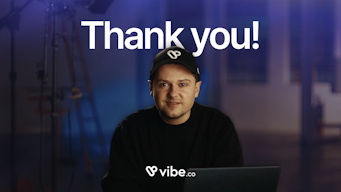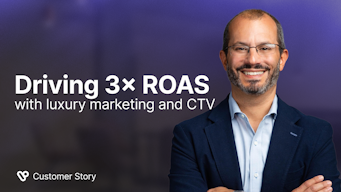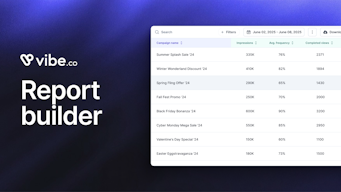Law Firm Advertising on CTV
In the immortal words of Jack Nicholson, “You can’t handle the truth!” or at least that’s what the ad world has assumed about law firm advertisers… until now. You want to hear the truth? Here it is: linear television has lost over 50% of its viewers and getting people to remember your phone number with a catchy jingle is not how business is done anymore, because Google. Ouch.
Don’t fret. Virtually every sector is in the same boat as the media landscape continues to transform in the wake of a devastating pandemic, far-reaching privacy regulations, and new media consumption patterns. What matters now is to adapt to new customer expectations, fast.
Law firm advertising is notoriously difficult to get right, especially in hyper competitive areas like mass tort or personal injury. Let’s look at some of the top advertising challenges faced by consumer-facing law firms and see what new media tactics could help.
Law firm advertising challenges
Some of the most pressing issues facing law firm advertisers today have to do with striking a balance between “opportunist” targeting that ensures your ad appears in front of anyone who may eventually need your help (with injury, divorce, bankruptcy, etc.) and narrowing your reach enough that your are not delivering an ad to the same person 10 times a day or to an irrelevant audience (children, viewers outside of your geographic area).
You should be looking for a solution that can solve for wasted ads (paid for but not seen), oversaturation, audience engagement, and tracking.
Finding the right audience
Until very recently, identifying qualified leads was strictly a numbers game: get in front of enough people and some of them are bound to need your services. The problem with that approach is that you are still paying for all of those impressions, whether they lead to client acquisition or not. Not only that, but over half of television viewers aren’t even watching linear (“traditional”) television at all anymore!
In the last 2 years, Connected Television viewership has grown to 4 times what it was before the pandemic and shows no sign of slowing down. In fact, 82% of all US households with television now own at least one connected television device and spend twice as much time watching programs on a connected device than on traditional television. As of 2022, 55 million US viewers have “cut the cord” and left cable for CTV. That’s a lot of time and attention your ads are probably not getting.
Even more important than the volume of potential new viewers, however, is the unprecedented ability marketers now have to target viewers who fit the profile of qualified leads. Because streamed television programs are delivered over the internet, connected television advertising platforms can use IP addresses to target viewers by geo-location, demographic, household income, interest, and more.
Optimized format and delivery
Targeting clients on streamed content also means advertisers can reach audiences on different device types - mobile, tablet, and television screens, so you’re not missing folks watching the news on their phone during their morning commute, or chilling on their tablets at night.
Is this starting to sound more like digital advertising on social media or Google Ads? That’s because the functionalities are the same:
- Low cost of entry
- Pacing control
- Real-time reporting
- Simple platform interface
- Targeted audiences
- No contracts
But you also get the benefits of television advertising:
- Non-skippable ads
- 97% view-through rate
- Unparalleled storytelling
- Highly engaged audience
- Brand building next to quality content
A brave new world
When someone needs legal help in today’s world, they will look it up online, not call a number from a billboard or radio jingle they memorized through sheer repetition. That’s why brand storytelling and recall should be at the very top of your campaign goals. There are a few ways to measure that.
Different metrics
Connected Television advertising has a new set of metrics to follow, as it adapts to new viewer behaviors. It doesn’t rely on vague Nielsen report numbers for average impressions by DMA (Designated Marketing Area) like traditional television advertising does, but it doesn’t follow typical display advertising metrics either.
Here’s what to look for:
- Reach (the number of users that viewed your ad) and frequency (how many times users saw your ad)
- CPCV (Cost Per Completed View)
- VCR (Video Completion Rate)
- CPM (Cost per 1,000 impressions)
- Impressions by geo, state, county & zip
- Views by device
- Increase in branded search traffic to your website
- Call tracking activity
- Increase in total leads generated
Connected television best practices
Wondering how to get the most out your law firm’s ad on a new medium? Here’s a cheat sheet. It can be our little secret ;)
- Before anything else, identify the goal of your campaign: are you looking for brand awareness or programmatic performance? This decision will affect creative, strategy, and KPIs, so consider it carefully.
- Avoid the temptation to get too granular in targeting so that your reach can stay where you need it. If you want to target several segment sets, consider dividing your campaign into different strategies.
- Test early and test often. One of the most revolutionary changes CTV has brought to the TV advertising landscape is real-time reporting. This affords users unprecedented flexibility in budget, creative, and targeting. Make the most of it!
- We recommend Automatic Bidding in order to get the most out of your budget.
- Be concise and to the point - especially for performance ads.
- Don’t ignore audio. If you are used to social ads, you already know how to create impactful graphics, but sound is an intrinsic part of TV advertising - make the most of it!
- People want to watch people. Include people and faces in your creative if at all possible.
- Keep your branding - URL/logo/brand name - on the screen at all times.
- Use a strong CTA at the end of the ad, preferably with a voice over restating it.
- Stuck on creative? We have partners to help you! Simply contact support.
Now is a good time to get started with a powerful marketing medium that your competition may not have started using yet.



